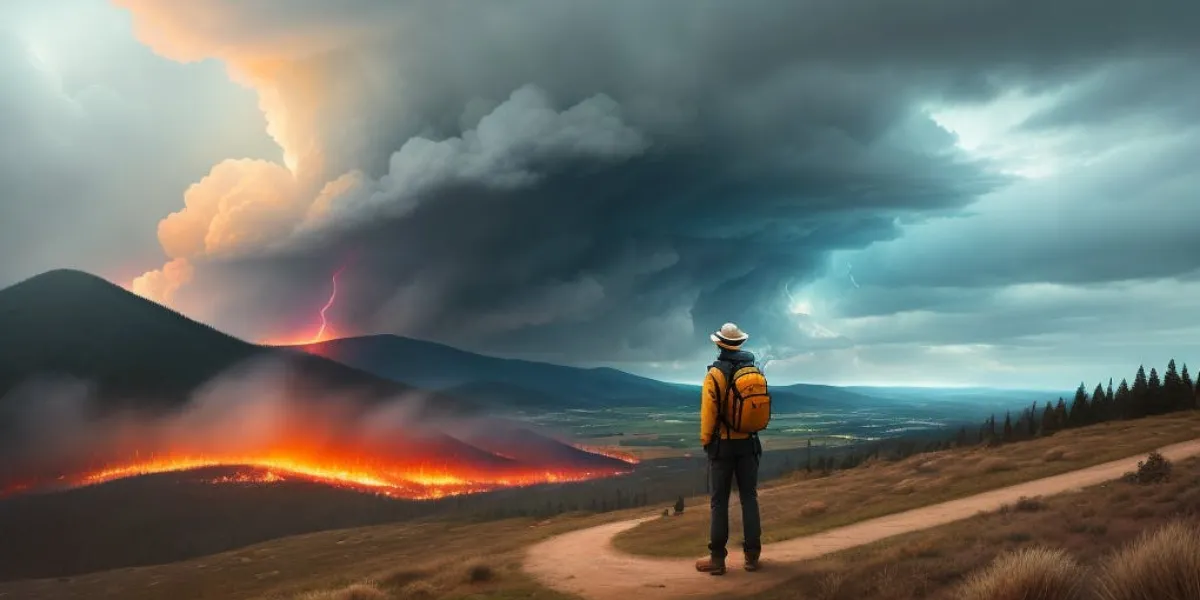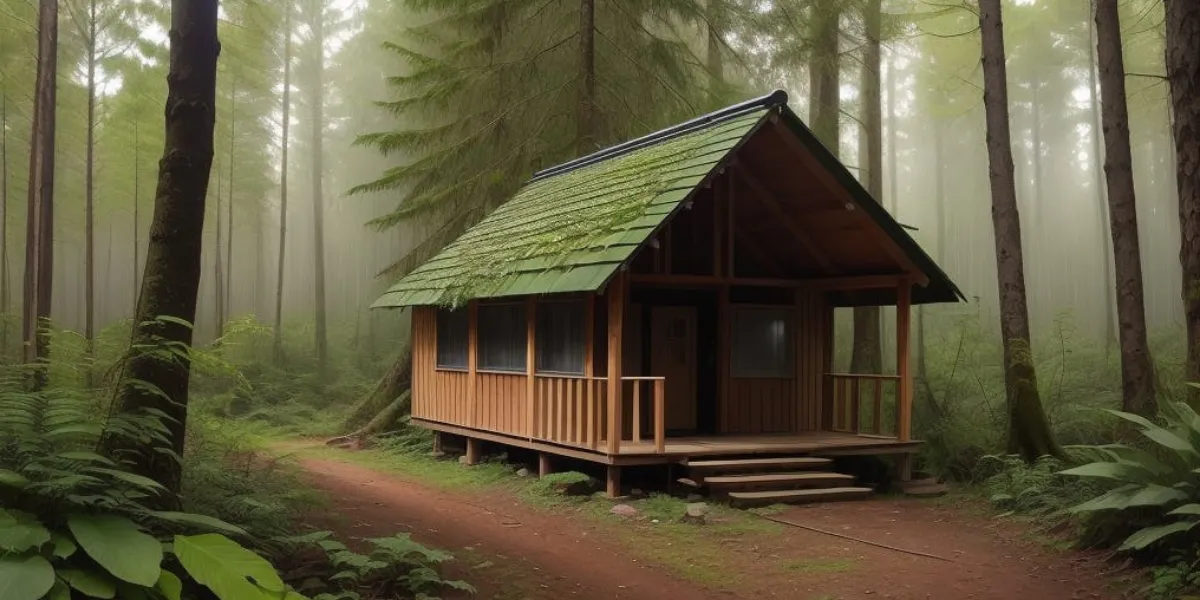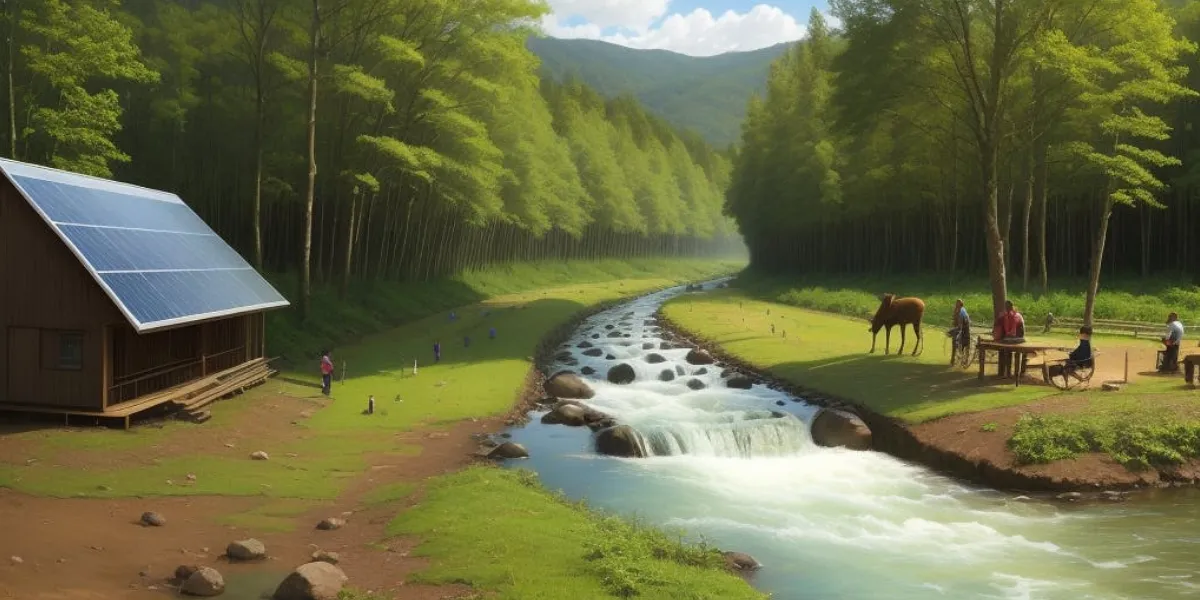
Survivalist Tactics For Navigating Natural Disasters Successfully
Every year, natural disasters affect millions globally, but you’re not powerless. You can master survivalist tactics to navigate these crises successfully with a well-designed emergency plan. By assessing threats, preparing emergency kits, and crafting communication plans, you’ll gain the confidence to handle any calamity and stay safe. This disaster plan guide empowers you with sheltering strategies, food and water sourcing, medical care knowledge, and evacuation protocols. You’ll learn not just to survive, but also to thrive post-disaster. Embrace your journey to self-reliance starting now.
Key Summaries
Risk Assessment and Preparedness: Evaluating the severity of natural disasters through risk analysis is crucial.
Survival Skills and Sourcing: Beyond preparedness kits, knowing how to source food, purify water, and apply first aid skills is vital for self-reliance in the wild.
Communication and Navigation: Learning communication methods like distress signals and navigation techniques using physical maps, compasses, and celestial navigation are invaluable.
Shelter and Evacuation Strategies: Sheltering strategies involve fortifying existing spaces, understanding safe locations, and having exit plans.
Assessing The Threat Level
You must accurately evaluate the severity of any natural disaster you’re facing to determine your immediate course of action. Risk analysis is a vital tool in your arsenal; it empowers you to dissect the potential impacts of impending threats. By conducting a thorough risk assessment, you’re armed with knowledge that not only forecasts the calamity’s scale but also steers you towards making informed decisions about safeguarding your well-being.
Disaster forecasting is no longer a luxury—it’s a necessity. With advanced technology and predictive models, you’re able to anticipate the intensity and trajectory of natural phenomena. Whether it’s a raging hurricane, an unpredictable earthquake, or a swelling flood, your ability to interpret early warnings can mean the difference between captivity and freedom.
Don’t underestimate the power of staying ahead. You’re striving for liberation from the clutches of chaos. And while you can’t control nature’s fury, you can control your response to it. Equip yourself with critical data, understand the language of the elements, and position yourself where you can outmaneuver the risk. You’re not just a bystander in the face of disaster, you’re a strategist poised for survival.

Emergency Preparedness Kits
Having assessed the threat, it’s crucial to assemble an emergency preparedness kit tailored to your specific needs and the risks you’re likely to face. Your survival hinges on kit essentials that hold up under pressure; thus, durability considerations can’t be overstated. You’ll need resources that resist wear, withstand the elements, and remain reliable over time. Here's my list of the ten essential items for survival.
To ensure your kit is both comprehensive and resilient, analyze the following table:
| Category | Kit Essentials | Durability Considerations |
|---|---|---|
| Basic Supplies | Water, food, flashlight | Waterproof containers, non-perishable food items |
| Personal Care | Medications, first-aid kit | Robust packaging, long expiration dates |
| Tools & Shelter | Multi-tool, thermal blankets | Rust-resistant materials, tear-resistant fabrics |
Remember, these components are the backbone of your emergency strategy. A solid kit not only contains life-sustaining items but also embodies the strength to protect those items from degradation. Prioritize quality and practicality; your gear should empower you to face calamity with determination and foresight.
Water is your top priority. Store at least one gallon per person per day for at least three days. For water purification, include iodine tablets, a portable filter, or a way to boil water. Food should be non-perishable and easy to prepare, like canned goods or energy bars. Don’t forget a manual can opener.
Your emergency preparedness kit is more than a collection of objects—it’s an assertion of your autonomy and resolve in the face of nature’s unpredictability. Assemble it with care, and you’re asserting control over your survival narrative.
Food And Water Sourcing
While you’re securing your shelter, don’t forget that finding reliable sources of food and water is just as crucial for your survival. It’s essential to understand that your independence in a disaster hinges on your ability to sustain yourself. To ensure you’re well-prepared, sharpen your hunting skills and learn plant identification – these are invaluable in the wilderness.
When it comes to water, prioritize safety and purification techniques. Remember, a clear stream may seem inviting but could harbor pathogens. Boiling water or using purification tablets can save you from waterborne illnesses.
Here’s a bullet list to guide you:
Hunting skills: Master basic trapping and fishing techniques; these can provide a steady supply of protein.
Plant identification: Learn which plants are edible and medicinal to avoid poisoning and to bolster your health.
Water purification: Always purify water using boiling, chemical tablets, or filters.
Food storage: Understand how to store food safely to prevent spoilage and waste.
Sustainable practices: Balance what you take from nature to avoid depleting resources, ensuring long-term survival.
First Aid And Medical Care
Your first-aid knowledge could mean the difference between life and death when medical help isn’t available. In the aftermath of a natural disaster, you’re often the first responder for yourself and others. Prioritize injury prevention; always wear protective gear and assess risks before acting.
Understand triage techniques—this is the art of prioritizing medical care when resources are scarce. Analyze injuries quickly; determine who needs immediate attention and who can wait. Severely injured individuals should be stabilized first, focusing on maintaining their airway, controlling bleeding, and preventing shock. Learn to recognize the signs of internal bleeding, fractures, and concussions, as these conditions can deteriorate rapidly without proper intervention.
Cultivate a comprehensive first-aid skill set. Know how to perform CPR, treat burns, and manage wounds. Build and maintain a robust first-aid kit, ensuring it includes antiseptics, bandages, splints, and necessary medications.
Your preparedness and ability to act decisively with life-saving techniques epitomize the self-reliance necessary for navigating the chaotic terrain of a natural disaster. Arm yourself with knowledge; it’s a powerful tool that enables you to confront adversity head-on, undeterred by the challenges that lie ahead. Here's my list of key first aid kit basics.

Communication And Navigation Methods
Even though technology may fail during a disaster, it’s crucial that you’re familiar with both conventional and innovative communication and navigation methods to maintain contact and find your way to safety. Knowing radio protocols can make a significant difference. Start by getting a hand-crank or solar-powered radio. Learn the emergency frequencies and practice how to send distress signals. Remember, clarity and brevity in your communication save lives.
For navigation without GPS, you’ll need to master the art of reading physical maps and using a compass. It’s a methodical skill set that you must practice regularly. Familiarize yourself with the terrain features of the areas you frequent to enhance your ability to navigate under stress.
When the night sky is clear, star navigation becomes a powerful tool. Identify key constellations and learn to find the North Star in the Northern Hemisphere, or the Southern Cross in the Southern Hemisphere, to determine your direction. This knowledge of celestial navigation is age-old but remains a liberating skill when modern devices are rendered useless.
Being adept at these techniques will empower you to confidently handle communication and navigation during the chaos of natural disasters, ensuring your survival and freedom from reliance on potentially compromised technology.
Family Communication Plans
In survival situations, a robust family communication plan is your lifeline, ensuring that in the chaos of a disaster, you’ll stay connected with your loved ones. To navigate the unpredictable nature of natural calamities, you need to establish signal methods and a reliable message relay system that won’t falter when conventional means may fail.
Here’s what’s essential for your plan:
Designate a family meeting point: Choose a location away from your home in case it’s inaccessible.
Assign roles and responsibilities: Each family member should know their part in the communication chain.
Select alternative communication tools: Think walkie-talkies or satellite phones when cell towers are down.
Create an out-of-town contact: Someone to act as a central message relay, connecting separated family members.
Regularly review and practice the plan: Ensure everyone’s familiarity and readiness for action.
Your communication strategy must be clear, direct, and adaptable to the unpredictable. It’s about more than staying in touch; it’s about enabling each family member to act independently yet cohesively towards safety.
Equip yourself with knowledge and tools that offer freedom from relying solely on fractured infrastructures, and you’ll enhance your family’s ability to weather any storm.

Sheltering Strategies
Amidst the uncertainty of natural disasters, your next critical step is to master sheltering strategies that’ll keep you and your family safe. When the world outside is in turmoil, knowing how to fortify your temporary refuge can mean the difference between vulnerability and survival.
Start with your home. It’s imperative to bolster your living space with improvised insulation. Common materials like blankets, sleeping bags, and even bubble wrap can be repurposed to retain heat and block out the cold or dampen sound. Windows are weak points - seal them with plastic sheeting and reinforce doors against high winds or debris.
In extreme circumstances, underground havens offer unparalleled protection. Basements, storm cellars, and even subterranean shelters can shield you from the ferocious onslaught of nature’s wrath. If you’re constructing an emergency hideout, prioritize depth and stability. The deeper you go, the more you’re insulated from the chaos above.
Shelter And Location Strategies
If you are not in your home and it is difficult to get back, you’ll need to identify a safe shelter and understand the best practices for choosing your location before a disaster strikes. You’re not just seeking refuge; you’re asserting your freedom from the chaos by being proactive and prepared.
Performing a thorough terrain analysis is essential. You need to assess the area for risks like flooding, landslides, or exposure to the elements.
When you’re on the move, stealth camping can be a lifesaver. It’s all about being inconspicuous and leaving no trace. Choose spots that aren’t only safe and strategic but also allow you to remain undetected. Here are some essential basic survival skills.
Here are some key points to keep in mind:
Evaluate the land: Look for high ground that’s less likely to flood and has natural protection against the elements.
Avoid hazards: Stay away from unstable structures and natural danger zones like dry riverbeds.
Be inconspicuous: Use natural cover and terrain to camouflage your presence.
Plan for exit routes: Always have a plan for a quick and safe evacuation if necessary.
Evacuation Protocols
Considering evacuation protocols, you’ll need to identify safe routes from your home and workplace well in advance of any disaster. Mapping out these paths is crucial for a timely escape, ensuring you’re not trapped or led astray when public alerts signal an imminent threat. Your quest for autonomy in crisis situations hinges on proactive planning and familiarization with multiple egress options.
Stay Informed: Regularly check updates on local hazards and modify your evacuation plan accordingly.
Practice Drills: Run through your evacuation routes periodically to build muscle memory and confidence.
Pack Essentials: Have a ready-to-go bag with vital supplies to sustain you during displacement.
Communication Plan: Establish a system to contact family members if you’re separated during an evacuation.
Transportation Readiness: Maintain your vehicle’s reliability or identify public transportation options if you don’t drive.
This analytical approach prepares you to navigate chaotic environments with a strategic mindset. Remember, safe routes are your lifelines, and staying alert to public alerts can significantly increase your chances of survival. As you embrace these protocols, you assert your right to safety and self-determination, even amidst the unpredictable forces of nature.

Post-Disaster Recovery
Once you’ve navigated the evacuation successfully, it’s crucial to focus on the recovery phase to restore normalcy to your life as quickly as possible. The path forward demands mental resilience; this inner strength will power you through the challenges of reclaiming and rebuilding your life and environment. It’s not just about physical reconstruction—it’s about fortifying your psyche against the aftershocks of trauma.
You must prioritize self-care and seek emotional support to bolster your mental resilience. Engage with community leaders and support groups; they’re pivotal in fostering a collective strength that can lead to effective community rebuilding. Remember, the fabric of society is strongest when woven together with diverse, resilient threads.
Assess the damage calmly and create a systematic plan for recovery. Document everything for insurance purposes and reach out to relief organizations for assistance. Be proactive in learning about the resources available to you and your community.
Community rebuilding isn’t a solo endeavor; collaboration is key. Work with neighbors to restore essential services and infrastructure. Engage in community planning meetings to ensure that the reconstruction efforts reflect the needs and desires of all members, liberating your community from the throes of disaster with unified resolve and shared purpose.
Frequently Asked Questions
How do survivalist tactics differ for urban versus rural environments during a natural disaster?
You’ll find urban preparedness focuses on finite resources and tight spaces, while rural adaptability requires knowledge of the land and self-sufficiency. Both demand distinct strategies to thrive through nature’s fury.
What mental health strategies can be employed to maintain psychological resilience in the aftermath of a natural disaster?
You’ll need to establish coping mechanisms, such as mindfulness practices and support networks, to foster emotional preparedness and resilience after a disaster. Methodically work through feelings, prioritizing self-care on your journey to recovery.
What are the ethical considerations when competing for limited resources in a survival scenario?
You’ll face moral dilemmas in resource allocation; consider others’ needs and rights. Be methodical, share essentials, and strive for equitable distribution to ensure liberation for all, not just survival for oneself.
How can local flora and fauna knowledge be leveraged for survival if traditional food sources are unavailable post-disaster?
You’ll thrive post-calamity by mastering flora identification and noshing on edible insects. Learn which plants are safe, and which bugs are nutritious, to ensure you’re never at nature’s mercy for sustenance.
Conclusion
In the wake of disaster, you’re the steadfast oak, deeply rooted in preparedness. Your survival kit is your acorn, promising regeneration; your plans, the strong branches that shelter loved ones. With wisdom to source sustenance, your leaves unfurl, sustaining life. Your evacuation, a calculated pruning, ensures growth. And in recovery, like the mighty oak, you stand tall once more, a testament to resilience. Remember, survival isn’t just enduring—it’s thriving amidst the storm. ###

